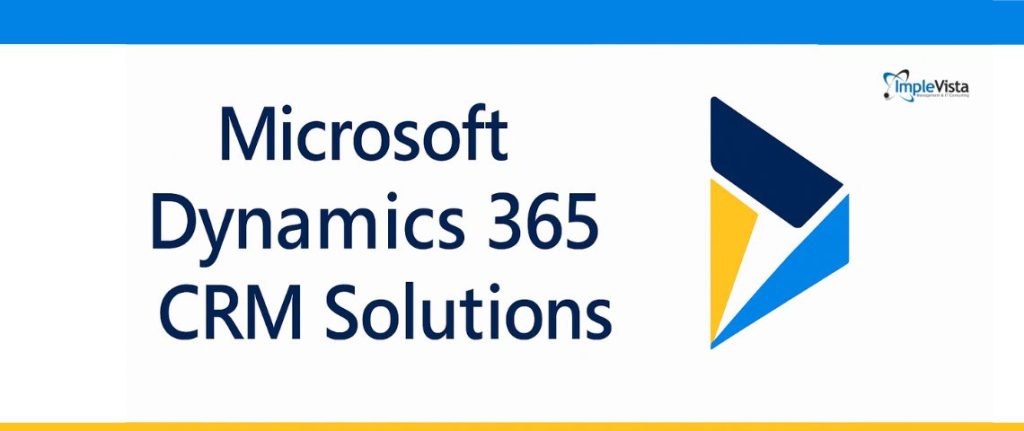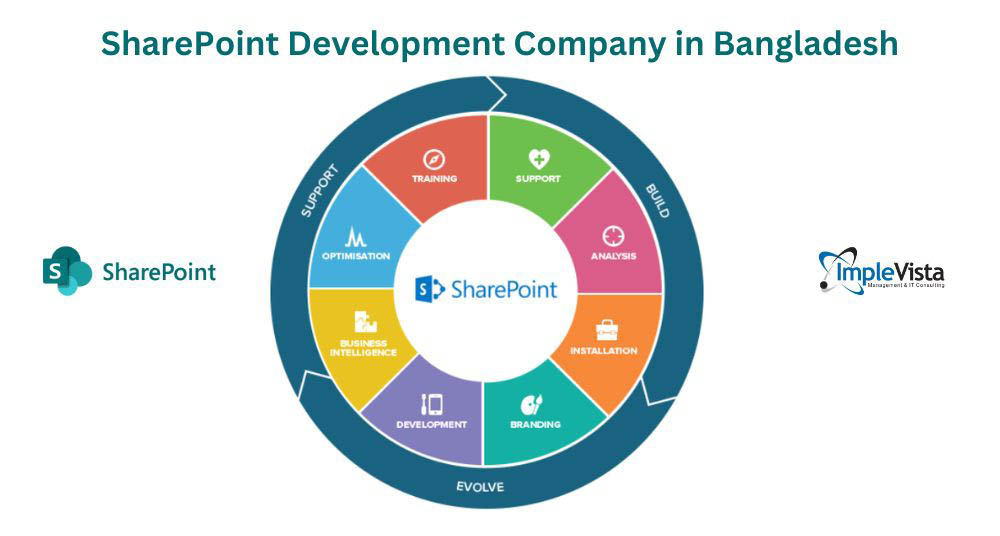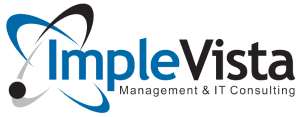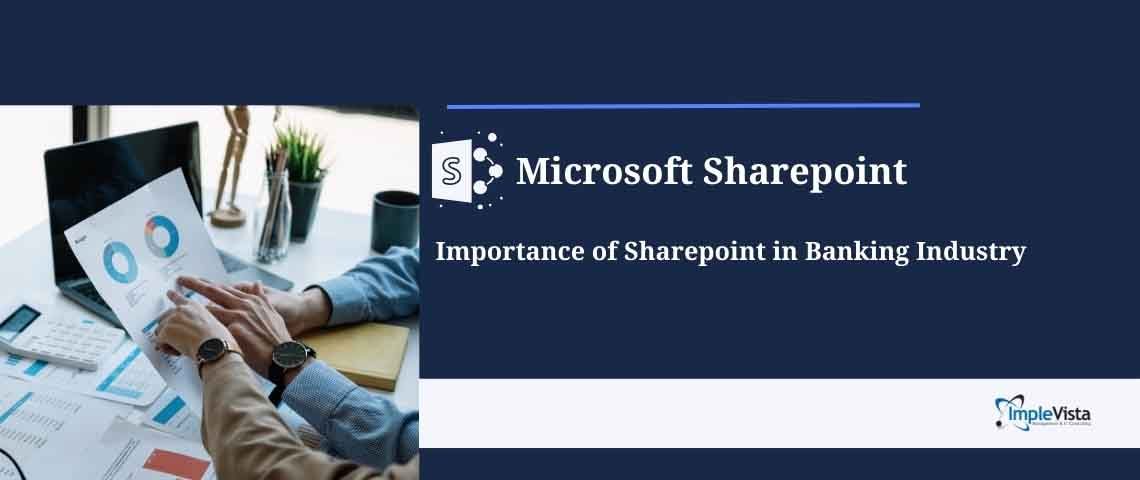The banking and financial sector is undergoing rapid digital transformation, making secure collaboration and efficient information management more important than ever. A well-designed SharePoint intranet is pivotal for banks and financial institutions to centralize documents, enforce compliance, and streamline operations. As a Microsoft enterprise platform, Microsoft Share Point offers a robust foundation for building a banking intranet that addresses industry-specific needs like data security, regulatory reporting, and process automation.
In this article, we explore the top 7 advantages of implementing Share Point in the banking industry, illustrating how each benefit helps institutions operate smarter and safer. SharePoint’s integration with the wider Microsoft 365 ecosystem means banks can leverage tools like Teams, Power Automate, and Purview (security/compliance) within a unified platform.
This synergy allows financial institutions to collaborate effortlessly on documents and communications, while keeping customer data protected. Many banks already have Share Point licenses, but customizing Share Point as an intranet tailored to banking needs makes all the difference. Implevista, a leading IT services company in Bangladesh, provides custom SharePoint solutions to help banks maximize these capabilities. Throughout this article, we’ll highlight practical ways Share Point transforms banking operations – from intuitive search and workflows to strict data governance.
Banks deal with vast amounts of information every day. A modern Share Point intranet acts as a central hub for this data, making it easy for employees to find and use documents while maintaining strict controls. For example, Microsoft notes that SharePoint’s permission settings ensure “only authorized personnel can view sensitive financial data”.
In practice, this means a teller or loan officer can quickly locate the latest form or policy by using Share Point’s powerful search features, without risking exposure of confidential customer records. By consolidating documents – policies, customer files, contracts – into SharePoint libraries, banks create a single source of truth for information. This centralized approach improves efficiency and reduces costly errors caused by outdated files or emails.
Banks also operate under heavy regulatory scrutiny. Share Point helps meet compliance mandates by providing audit trails, retention labels, and DLP (Data Loss Prevention) features. For instance, administrators can apply classification labels and retention policies to financial documents so that records are automatically archived or destroyed per industry regulations.
SharePoint’s integration with Microsoft Purview enables encryption-at-rest and in-transit, safeguarding data against breaches. As a result, financial institutions can “store, organize, and manage financial documents and regulatory filings” within Share Point to help ensure compliance with banking regulations. By logging all user actions, Share Point intranets make audits simpler, giving compliance officers a clear trail of who accessed or modified any document.
Benefits of SharePoint Intranet for Financial Institutions
Banks and credit unions have unique operational needs, and a custom SharePoint intranet addresses them through the following key advantages:
- Intuitive Search Capabilities – Advanced document search helps employees find exactly what they need in seconds.
- Custom Workflow Services – Department-specific workflows automate common banking processes.
- Safeguards Financial Data & Backup – Enterprise-grade security and backup protect sensitive information.
- Seamless Compliance Management – Built-in compliance tools ensure regulatory requirements are met.
- Document and File Monitoring – Centralized libraries with version control keep files organized and auditable.
- Automation of Banking Processes – Digital forms and automated approvals streamline operations.
- Role-Based Access & Authorizations – Granular permissions manage who can view or edit different data.

Below, we discuss each benefit in depth, explaining how SharePoint transforms banking operations and elevates efficiency and security.
-
Intuitive Search Capabilities
In a busy financial institution, time is money. SharePoint’s enterprise search lets staff locate documents, policies, or client records instantly without manually browsing folders. Rather than sifting through an outdated file dump, users can enter keywords or filter by metadata (e.g. customer name, account number, or document type) to zero in on relevant content. SharePoint automatically indexes text in documents, emails, and even scanned PDFs, ensuring that even large troves of data are searchable.
For example, a credit analyst in a bank can quickly find all relevant loan agreements by searching key terms instead of requesting IT assistance. Microsoft touts that a well-designed Share Point intranet offers “Instant Search” so users get answers in seconds, not minutes. Share Point’s intelligent refiners further narrow results by date, author, or department, making it easy to drill down to the right file.
This intuitive search capability reduces operational delays and frees employees from repetitive data hunting. As one source notes, advanced search features in a SharePoint banking portal allow staff to “get exactly what you are scanning” without wading through irrelevant results. The result is a more productive workforce: tellers and loan officers spend less time searching and more time serving customers.
-
Custom Workflow Services
SharePoint’s flexible workflow engine lets banks automate end-to-end processes for different service lines. Each department – loans, wealth management, treasury, compliance – can have its own tailored SharePoint site with specialized workflows and dashboards. For example, a loan origination workflow can automatically route a new loan application through the required approval steps. When a client submits an online loan request, SharePoint can trigger tasks like credit checks, underwriting review, and final approval, notifying the right officers at each stage.
These custom workflows ensure timely services and regulatory adherence for each business area. SharePoint’s low-code tools (Power Automate and Power Apps) make it easy to build these workflows without heavy coding. Staff no longer manually chase paperwork; instead, Share Point sends automatic notifications and reminders. For instance, management can set up automated alerts when a customer KYC form is uploaded, instantly prompting the compliance team to review it.
Dashboards can track the status of hundreds of requests in real-time, letting directors see pending approvals or bottlenecks at a glance. In essence, Share Point workflows free staff to focus on high-value tasks. As one expert explains, SharePoint intranet portals allow the creation of specialized sites and services tailored to each support group within the organization, maximizing efficiency and accountability.
-
Safeguards Financial Data & Backup
Data security is paramount in banking. SharePoint provides multiple layers of protection to safeguard financial information. At the platform level, Microsoft applies enterprise-grade encryption, firewalls, and continuous threat monitoring to all SharePoint Online data. For sensitive on-premise deployments, similar Microsoft 365 security services can be integrated. Administrators define granular permissions in Share Point to restrict who can view or modify accounts, contracts, and client records. For example, only the mortgage team sees mortgage documents, while the compliance department has a read-only view of all regulated data. These permissions are easily managed through Share Point’s admin center.
Importantly, SharePoint’s back-up and recovery features help prevent data loss. Microsoft’s managed backup services take regular snapshots of SharePoint libraries. If files are accidentally deleted or corrupted, IT can restore a previous version or entire site collection. As one source notes, combining Share Point with Microsoft’s own backup capabilities “ensures the highest levels of data encryption and protection, as well as regular, automated backups”. In practice, this means customer records, transaction logs, and regulatory filings are not only locked down but also archived automatically. If a security incident or natural disaster strikes, the bank’s critical documents can be quickly recovered.
SharePoint also supports data loss prevention (DLP) policies. These allow banks to define patterns (e.g. credit card numbers or SSNs) and automatically block or encrypt content containing those patterns. For instance, if someone tries to upload an Excel with unmasked financial data, the system can flag it or block external sharing. This keeps confidential data inside the secure SharePoint perimeter. Overall, SharePoint combines proactive protection and reliable backup so that financial data remains secure and always available.

-
Seamless Compliance and Regulatory Management
Banks must comply with stringent regulations (PCI DSS, SOX, GDPR, local central bank rules). SharePoint’s built-in governance tools make this far easier. Compliance officers can set up checklists and alerts in the intranet so that when regulations change, the system notifies the appropriate teams and mandates document reviews. For example, a SharePoint compliance site can automatically remind auditors to update policy documents before an exam or alert staff of a regulatory filing deadline.
SharePoint makes documenting compliance a systematic process. All policies, certificates, and audit logs can be stored in dedicated libraries, where version control and retention labels ensure nothing is lost. The platform’s audit logs record who accessed or edited any document, creating an immutable trail for regulators.
One Microsoft example highlights SharePoint’s ability to “Help ensure comprehensive compliance with certifications, regulations, and industry standards for financial services.” By linking content labels to regulatory frameworks (e.g. tagging a file “PCI2018”), the bank can generate reports of all relevant documents instantly.
Moreover, SharePoint supports information barriers and approval processes that align with compliance needs. For instance, deal teams can collaborate on M&A documents in a closed SharePoint site that auditors can’t access, preserving confidentiality.
Simultaneously, sensitive files can be automatically watermarked or require manager approval before sharing. Such measures satisfy both legal requirements and bank policies. As one source notes, the intranet’s compliance system can be “modified to better suit the regulations” of the organization, with automated notifications for each change.
In summary, SharePoint helps banks “document, keep up with, and monitor adherence to national and international standards” seamlessly. This means less manual effort tracking spreadsheets of deadlines, and more confidence that the bank will pass its next regulatory audit.
-
Document and File Monitoring
Efficient document management is a hallmark of a good SharePoint intranet. SharePoint provides central repositories where all banking documents are organized by category, department, or customer. Each library can be finely configured: for example, the home loans department might have a library with folders for applications, underwriting files, and closing docs. SharePoint’s version history feature keeps track of every change: if two employees edit the same loan contract, SharePoint saves each draft so you can restore an earlier version if needed. This prevents conflicts and data loss.
Importantly, SharePoint enables real-time co-authoring. Multiple staff can work on a document (like a policy or report) simultaneously in the browser. All edits are tracked and merged, saving time. Metadata (data about data) is another powerful tool: banks can tag records by account number, branch, or product type, making ad-hoc reports easy. For instance, compliance might tag suspicious transaction files so they can be reviewed in bulk.
Monitoring features also help maintain security and organization. SharePoint’s alert system can notify managers when high-priority documents are added or changed. For example, if a new internal audit report is uploaded, an alert goes to the audit team. Administrators can see analytics on site usage and documents accessed – valuable for spotting unusual activity. One source explains that intranet software for financial firms often includes “a central repository system, document versioning, co-authoring, [and] access authorization”. These capabilities ensure that every financial record (from client agreements to internal policies) is monitored, backed up, and up-to-date.
-
Automation to Streamline Banking Processes
Many banking tasks are repetitive and paperwork-heavy (e.g. loan approvals, expense reimbursements, leave requests). SharePoint excels at automating these workflows to save time and reduce errors. Using SharePoint and Power Automate, banks can replace manual forms with digital forms. For instance, employees can submit expense reports via an online SharePoint form, which then triggers an approval workflow: receipts are automatically routed to the finance manager, then to payroll, without any paper passing hands. This not only speeds the process but creates an audit trail of who approved what and when.
Another key area is KYC (Know Your Customer) and account opening. A SharePoint workflow can automatically guide a new account request through credit checks, risk approval, and documentation steps, notifying each department in turn. As one financial architect notes, SharePoint’s automated processes “go smoothly and don’t disrupt the way things are done now” while eliminating much of the manual work. Employees can design these digital workflows themselves or with minimal IT help, using Power Automate’s templates for approvals, reminders, and integrations. For example, banks often integrate SharePoint with their CRM or ERP systems so that data flows automatically between them.
The end result is a leaner operation: staff spend less time shuffling paper or sending reminder emails, and more time on customer service or analysis. One expert observed that significant improvements from a SharePoint intranet can “save a lot of time and money” and boost productivity in competitive environments. By automating routine banking processes, SharePoint helps banks respond faster to customers (e.g. quicker loan decisions) and ensures consistency in service.
-
Role-Based Access & Authorizations
Banks handle highly sensitive data, so controlling access is critical. SharePoint’s role-based permissions allow multi-level protection of information. Administrators can categorize data into critical, non-critical, and redundant, and set permissions accordingly. For example, only senior loan officers may have full control over high-value mortgage files, while tellers have read access to basic account documentation. SharePoint lets you define these rules at many levels – site, library, folder, or even per document.
These permissions work across the intranet. A regional branch’s team might have a site only they see, while national teams have separate access. SharePoint also authenticates users (optionally via Azure AD MFA), ensuring data access is locked down. One article explains that SharePoint’s built-in system “ensures that only authorized users can see or change sensitive information” in a banking intranet. In practice, this means if a junior accountant tries to access a restricted file, SharePoint will prevent it and log the attempt.
Furthermore, SharePoint includes audit and compliance features tied to access. Each time a user views or edits a document, SharePoint logs it. Administrators can review access logs to detect anomalies – for example, if someone downloaded a customer list they shouldn’t. Alerts can trigger on these events to notify security teams.
Finally, since banking workflows often require approvals (e.g. loan manager authorizations), SharePoint can enforce multi-stage sign-offs. This way, nothing is finalized without the right person’s sign-off, all tracked within the system.By implementing these controls, SharePoint intranets turn a bank’s internal network into a “user-interactive platform [that] increases productivity and efficiency” while keeping client data safe. Teams and departments see only the data they need, audit reports are always available, and banks can confidently protect information.

Why SharePoint Matters to Banks
SharePoint isn’t just a generic corporate tool – it’s a critical enabler for modern banking. Banks today face pressures to digitize legacy processes, empower remote and branch staff, and meet 24/7 customer expectations. SharePoint meets these challenges by combining collaboration and control. Unlike siloed document systems, a SharePoint intranet brings everything under one roof: the CEO’s announcements, a credit report, an HR form, all searchable and governed consistently. This integrated approach fosters better communication across a bank’s divisions, ensuring everyone works with the same up-to-date information.
Many financial institutions find that implementing Share Point with the right design dramatically changes their operations. For example, a bank might reduce loan processing time by 30% simply by moving forms and approvals to Share Point. Centralizing files in Share Point libraries eliminates paper bottlenecks, meaning customer requests are handled faster.
With mobile access, branch staff and field agents can review documents or onboard clients using a Share Point portal, improving service. As one source points out, banks often struggle with “procedures scattered across different sites with no clear navigation”, but a purpose-built SharePoint intranet solves this by providing a single, well-organized interface.
Finally, from an IT perspective, Share Point provides long-term scalability. As banks grow or merge, new departments and locations can be added to the Share Point intranet without overhauling systems. Future technologies – like AI-driven content analysis or low-code process automation – can plug into the existing Share Point framework. This future-proofs the bank’s intranet: Microsoft continuously updates Share Point with new features, so a SharePoint-based system remains cutting-edge.
Implementation and Best Practices
To reap these benefits, banks must plan their SharePoint deployment carefully. Key steps include:
- Assessment and Design: Identify core banking processes and compliance needs. Decide what content (e.g. accounts, applications, policies) goes into Share Point and who needs access.
- Security Planning: Work with compliance officers to configure permissions and DLP policies up front. Use Azure AD groups to manage role-based access at scale.
- Customization: Tailor Share Point sites and libraries to each department (e.g. loans, retail banking, investment services) rather than a one-size-fits-all model. Apply financial branding and layouts for ease of use.
- Data Migration: Audit existing documents and migrate active files to Share Point. Archive or purge outdated documents to avoid clutter. Utilize metadata tagging for efficient future retrieval.
- Training: Provide training so staff know how to use search, check out/in, and follow workflows. Promote Share Point as the official place for information.
- Governance: Establish governance policies (lifecycle of sites, archives, deletion rules). Schedule regular reviews of permissions and content.
- Integration: Leverage Power Automate to connect Share Point with banking systems (e.g. core banking or CRM) for seamless data flow. Also integrate Power BI dashboards for insights.
By following best practices, banks can ensure high adoption and a smooth rollout. For many clients, Implevista has guided Share Point implementations alongside other digital solutions. Our team of certified Share Point developers understands how to align the platform with Bangladeshi banking regulations and workflows, building intranet portals that both bankers and regulators trust.

FAQs about SharePoint in Banking
Q: What is SharePoint and why use it in banking?
A: Microsoft SharePoint is a collaborative platform for document management and intranet portals. Banks use Share Point to centralize customer records, policies, and workflows on a secure internal network. It improves collaboration (via team sites), enhances security (through permissions and encryption), and supports compliance. In the banking industry, Share Point turns legacy file cabinets and email chains into a modern, searchable intranet that speeds up processes and keeps data safe.
Q: How does SharePoint ensure data security for banks?
A: SharePoint uses enterprise-grade security measures. Administrators set granular permissions to restrict access to sensitive folders or files. Data at rest and in transit is encrypted via Microsoft 365’s security stack. Share Point also supports multi-factor authentication and DLP policies. Regular automated backups mean that even if a breach or accidental deletion occurs, the bank’s documents can be restored quickly. For example, only authorized credit officers can open loan files, and all access is logged for audit purposes.
Q: Can SharePoint help banks meet regulatory compliance?
A: Yes. SharePoint has built-in compliance features like retention policies, labels, audit trails, and content approvals. Banks can classify documents (e.g. PCI, SOX-related) and enforce retention or disposition rules. Share Point audit logs and workflows (e.g. acknowledgments for policy updates) help create an audit-ready environment. By using Share Point’s compliance center and Microsoft Purview integration, banks can continuously monitor regulatory adherence without manual spreadsheets.
Q: What are custom workflows in SharePoint for banking?
A: Custom workflows automate specific banking tasks. For example, a loan approval workflow can automatically route an application to credit review, risk management, and finally to a branch manager. In Share Point, workflows can trigger e-mail alerts, assign tasks, and collect digital signatures at each step. This replaces manual tracking and ensures each request follows the correct approval chain. Financial institutions can build workflows using Power Automate or Share Point Designer that match their existing processes for loans, onboarding, HR requests, etc.
Q: How does SharePoint handle document backups?
A: SharePoint Online (cloud) includes continuous backup by Microsoft, along with point-in-time restore capabilities. Administrators can restore entire sites or individual documents from snapshots. For on-premises Share Point, banks implement backup jobs that regularly export site data. In both cases, Share Point retains version history for documents, so users can revert to earlier versions if needed. These backup features protect banks against data loss from user error or system failures.
Q: In what ways can SharePoint streamline banking operations?
A: SharePoint streamlines operations through automation and centralization. By replacing paper forms with digital forms, tasks that once took days (like loan approvals or compliance reporting) can be completed in hours. Share Point’s co-authoring and team sites mean multiple staff can work on a document together without emailing files back and forth. Dashboards in Share Point provide at-a-glance status on workflows. Overall, banks see faster service delivery, fewer errors, and higher productivity when routine processes are built into Share Point.
Q: Is SharePoint suitable for mobile banking employees?
A: Absolutely. Share Point and Teams are fully accessible on mobile devices. Bank staff on the branch floor or in remote locations can use Share Point’s mobile app or responsive sites to review files, complete approvals, or check customer information. This ensures field teams have the same access to the intranet as office staff, improving efficiency and customer service.
Q: How does SharePoint support audits in banking?
A: Share Point provides detailed audit logs and version histories. Each time a user views or changes a document, Share Point records it. Administrators can generate audit reports to show every access or modification. This record-keeping helps banks pass financial and security audits by proving that only authorized changes were made.
Q: What kind of support is available for SharePoint in Bangladesh’s banks?
A: Local IT partners like Implevista offer full-cycle Share Point development and support in Bangladesh. They help banks design, deploy, and maintain Share Point intranets. With knowledge of local banking norms, these partners ensure the solution meets specific national regulatory requirements. Implevista’s team, for example, provides Share Point development, customization, and migration services tailored to financial institutions.
In today’s digital banking landscape, Share Point plays a crucial role in helping financial institutions work smarter, faster, and more securely. From improving document search and collaboration to enforcing strict compliance and automating tedious workflows, a well-implemented Share Point intranet delivers tangible value.
By centralizing banking data, encrypting it, and backing it up regularly, Share Point safeguards what matters most. It also enables banks to respond quickly to customer needs and regulatory changes.
Implementing Share Point can yield significant ROI: it reduces operational friction, cuts down processing times, and increases employee productivity. Perhaps most importantly, Share Point provides a trusted platform that banking staff can rely on day after day.
As a premier IT service provider, Implevista specializes in building Share Point-based intranet solutions for enterprises and financial firms. We help banks harness Share Point’s power while aligning it with regulatory standards and business goals.
If your bank is looking to modernize its internal systems, consider leveraging Share Point’s versatility. Contact Implevista today to learn how our Share Point development and intranet services can transform your banking processes. Whether you need a secure document management portal, automated loan workflows, or an end-to-end compliance solution, we have the expertise to make it happen. Embrace the future of banking with a Share Point intranet tailored to your needs – and join the many financial institutions already reaping its benefits.




